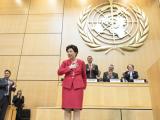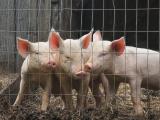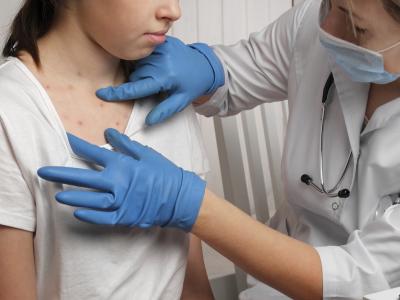Dec 23, 2009
WHO: Flu activity still growing in some areas
Pandemic activity seems to have peaked in most of the Northern Hemisphere, except for areas that were affected later, such as Eastern Europe and parts of Asia, the World Health Organization (WHO) reported today. Increases are being reported from South Asian countries such as India, Nepal, and Sri Lanka. Elsewhere, Barbados and Ecuador are noting spikes in respiratory illnesses. In Europe, the pandemic virus is predominant, but low levels of the three seasonal subtypes are circulating.
http://www.cidrap.umn.edu/cidrap/content/influenza/swineflu/news_scan/index.html
Dec 23 WHO update
Study: Kids' death rate 10 times that of seasonal flu
A retrospective study of children in Argentina showed twice the rate of hospitalization and 10 times the rate of death compared with seasonal flu, a New England Journal of Medicine study published today found. Of the 251 patients, 47 (19%) required intensive care, 42 (17%) were placed on ventilators, and 13 (5%) died. Of those who died, all but one were under 9 years old, and six were under 1.
http://content.nejm.org/cgi/content/full/NEJMoa0907673
Dec 23 N Engl J Med study
H1N1 has multitude of competitors
Samples from patients with respiratory disease sent to a lab company show that H1N1 is far from the only virus circulating in the United States this flu season and that other flu-like viruses are more common than usual. ViraCor Laboratories of Kansas City, Mo., reports that only 6% of specimens they tested were positive for influenza A. The most common virus found was rhinovirus, with metapneumovirus, respiratory syncytial virus, parainfluenza virus, and adenovirus also figuring in.
http://www.inform.com/article/Other%20viruses%20abound%20in%20U.S.%20flu%20season,%20tests%20show
Dec 22 Reuters article
Report finds TV most potent flu communicator
An August survey of two North Carolina counties found that most people (85%) received their H1N1 information from television, followed by newspapers (52%) according to the Dec 25 issue of Morbidity and Mortality Weekly Report (MMWR). The authors urge officials to focus more messages on TV. About 64% of adults said they would get the H1N1 vaccine, with 65% intending to get it for their kids. Safety concerns and low chance of infection were top reasons for not intending to get it.
http://www.cdc.gov/mmwr/preview/mmwrhtml/mm5850a1.htm/?rss
Dec 25 MMWR report
School closings can cause adults to lose pay
A phone survey that gauged the impact of a 2008 flu school closure on two Kentucky school districts found that an adult missed work in about a third of the families, with a worker losing pay in 15%, according to a report in the Dec 25 issue of MMWR. The school closed for administrative reasons, but most parents thought it was to stem the outbreak. Findings suggest districts should provide rationale for school closings and recommend how to reduce flu spread while kids are home.
http://www.cdc.gov/mmwr/preview/mmwrhtml/mm5850a2.htm/?rss
Dec 25 MMWR report
Seasonal flu vaccine may boost H1N1 vaccine effect
Receiving a prior seasonal flu shot may boost the effectiveness of the H1N1 vaccine, according to a study today in Science Translational Medicine. In the study, groups of ferrets who received seasonal flu vaccine a month before H1N1 vaccination showed stronger antibody responses when exposed to the virus than ferrets vaccinated for H1N1 alone—and those responses were greatest when the ferrets received seasonal vaccine with an adjuvant, an immune-boosting substance.
http://stm.sciencemag.org
Science Transl Med home page
South Korea finds H1N1 at 15 pig farms
South Korean veterinary officials today said they isolated the pandemic H1N1 virus at 15 pig farms during surveillance conducted since May. Their report to the World Organization for Animal Health (OIE) said the source of the virus wasn't known. The outbreaks were detected in December, mostly in the south. Response included movement restriction and farm disinfection. So far 241 of about 24,000 pigs tested positive.
http://www.oie.int/wahis/reports/en_imm_0000008789_20091223_120922.pdf
Dec 23 OIE report


















